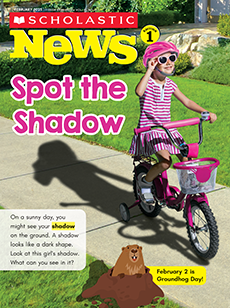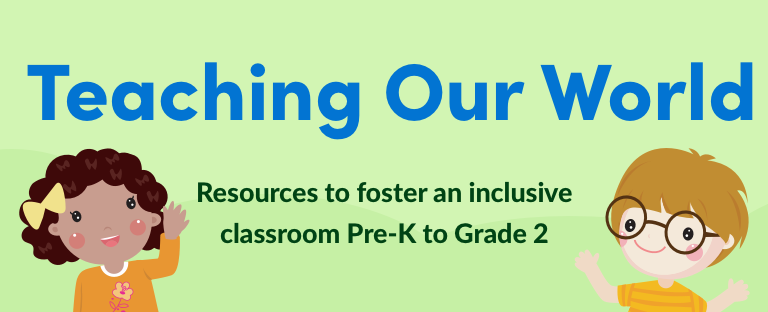How To Use Teaching Our World
Teaching Our World contains resources to supplement your anti-bias curriculum. These articles, videos, and stories are perfect for discussing difficult history, discrimination, and inclusion with your young learners in pre-K to second grade.
The content featured in Teaching Our World has been culled from Scholastic’s early childhood magazines—My Big World, Let’s Find Out, Scholastic News 1, Scholastic News 2, and Storyworks 2. While your students may not be able to read all of the articles and stories on their own, all are suitable for read-alouds for pre-K to second grade.
Teaching Our World content is divided into four curated collections: Celebrating Differences, Justice for All, Cool Kids, and Trailblazers and Inspiring Voices. There is no specific order in which to explore the content. Instead, pick and choose what best fits your curriculum and teachable moments.
We suggest reviewing the Welcome Letter and Vocabulary before using Teaching Our World. These documents will give you a great starting point for discussing these critical topics with your students.
We know you want to create a safe space for all students prior to delving into difficult topics. Children should come away from these lessons feeling empowered and respected.
4 tips for Teaching Difficult Topics
1. Engage in self-reflection
Before you discuss a challenging topic, it’s important to educate yourself by correcting any confusion or misinformation you may have.
2. Set the stage by establishing norms
If you already have a discussion protocol, like Responsive Classroom, in place, use it while having these conversations. If you don’t, work together with your students to create a classroom discussion agreement. Ask how they can be kind to each other while having a respectful conversation. Some “rules” could be: listen without interrupting, refrain from name-calling, and avoid making generalizations (e.g., use the word some instead of all when referring to groups of people).
3. Be cognizant of students’ experiences and feelings
It’s important to recognize the diversity of your students. Some of these conversations may be uncomfortable for some children and stir up strong emotions. That doesn’t mean the topics should be avoided! Instead, know that strong feelings could arise and be prepared to respect and respond to them.
4. Be an active facilitator
Keep the conversation going without dominating it. You should also correct misinformation and remind students to be respectful. Never let hurtful comments go unaddressed.
If you’re looking for more ways to extend your students’ learning, we have a suggested Children’s Book List. To learn more about teaching about diversity, social justice, and anti-bias behavior, see the links provided in More Resources for Teachers.


